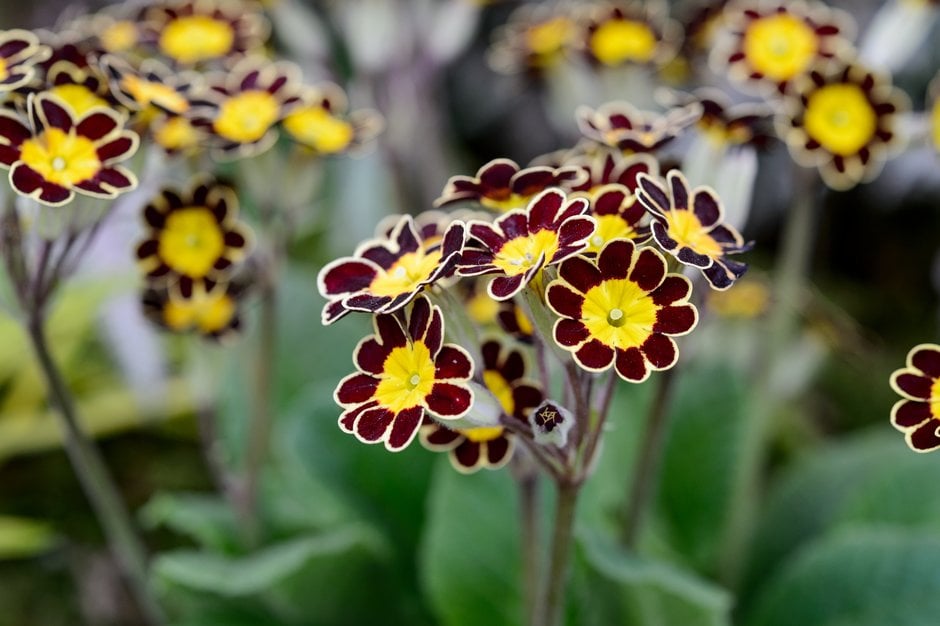Primula Gold-laced Group (Pr/Poly)
polyanthus Gold-laced Group
Gold-laced Group are semi-evergreen to evergreen perennials, growing to about 20cm high, with rosettes of oval leaves sometimes tinged with red. The spring flowers have a golden centre, and gold-rimmed deep mahogany petals
Synonyms
Primula elatior 'Victorian Gold Lace Black'Primula 'Gold Laced Mixed'
see morePrimula 'Gold Lace'
Primula elatior 'Gold Lace'
Primula veris 'Gold Lace'
Primula elatior 'Hybrid Gold Lace'
Size
Ultimate height
0.1–0.5 metresTime to ultimate height
2–5 yearsUltimate spread
0.1–0.5 metresGrowing conditions
Moisture
Moist but well–drainedpH
Acid, NeutralColour & scent
| Stem | Flower | Foliage | Fruit | |
| Spring | Red Yellow Gold | Green | ||
|---|---|---|---|---|
| Summer | Green | |||
| Autumn | Green | |||
| Winter | Green |
Position
- Partial shade
Aspect
West–facing or East–facing
Exposure
Exposed or Sheltered Hardiness
H7Botanical details
- Family
- Primulaceae
- Native to GB / Ireland
- No
- Foliage
- Semi evergreen
- Habit
- Clump forming
- Genus
Primula are herbaceous or semi-evergreen perennials, forming a basal rosette of simple leaves, with salver-shaped or bell-shaped flowers which may be solitary or carried in an umbel or in whorls on an erect stem
- Name status
Accepted
- Horticultural Group
- Polyanthus group primulas are rosette-forming perennials with umbels of salver-shaped flowers. They are usually grown as biennials by sowing seed in summer and planting out in autumn for flowers in winter and spring.
How to grow
Cultivation
Grow in moderately fertile, moist but well-drained, humus-rich soil in partial shade, or in containers
Propagation
Propagate by seed or division in autumn and early spring
Suggested planting locations and garden types
- City and courtyard gardens
- Cottage and informal garden
- Patio and container plants
- Coastal
- Rock garden
- Banks and slopes
- Flower borders and beds
- Underplanting of roses and shrubs
Pruning
Deadhead after flowering
Pests
May be susceptible to aphids, leafhoppers, vine weevil and slugs
Diseases
May be subject to grey moulds, primula brown core and a virus
Get involved
The Royal Horticultural Society is the UK’s leading gardening charity. We aim to enrich everyone’s life through plants, and make the UK a greener and more beautiful place.
